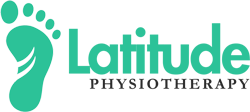Upper Crossed Syndrome
Injury Guide

Upper Crossed Syndrome is a common condition that can affect athletes and hinder their performance. It is characterized by a combination of muscle imbalances and postural abnormalities in the upper body. This syndrome is often caused by a sedentary lifestyle, poor posture, and repetitive movements associated with certain sports or training routines.
Symptoms:
Athletes with Upper Crossed Syndrome typically experience a range of symptoms. These include tightness and stiffness in the neck and shoulders, a forward head posture, rounded shoulders, and weak muscles in the deep neck flexors and middle back. They may also experience headaches, limited range of motion in the neck and shoulders, and pain or discomfort in the upper body during physical activity.
Anatomy:
This syndrome is characterized by an imbalance between certain muscle groups in the upper body, leading to postural abnormalities and dysfunction.
In Upper Crossed Syndrome, the affected muscles can be broadly divided into two groups: tight or overactive muscles and weak or underactive muscles. The tight muscles typically include the upper trapezius, levator scapulae, and pectoralis major and minor. These muscles become tight and shortened due to prolonged postures and repetitive movements, contributing to the characteristic rounded shoulders and forward head posture seen in this syndrome.
On the other hand, the weak muscles in Upper Crossed Syndrome are predominantly found in the deep neck flexors, lower and middle trapezius, and serratus anterior. These muscles tend to become lengthened and weakened as a result of muscle imbalances and poor postural habits. The weakness in these muscles further exacerbates the tightness and imbalance of the opposing muscles, perpetuating the cycle of dysfunction.
The implications of this muscular imbalance are significant for athletes. The tightness in the upper trapezius and levator scapulae can restrict the range of motion in the neck and shoulders, limiting an athlete’s ability to move freely and efficiently during training or competition. The forward head posture places excessive strain on the cervical spine and can lead to chronic neck pain, headaches, and even nerve impingement.
Furthermore, the weakness in the lower and middle trapezius and serratus anterior can result in scapular instability. This instability affects the coordination of shoulder movements, potentially leading to shoulder impingement, rotator cuff injuries, and decreased overall shoulder function. The weakened deep neck flexors also contribute to poor neck stabilization, increasing the risk of further injury during high-impact or contact sports.
Causes:
Several factors contribute to the development of Upper Crossed Syndrome. Prolonged sitting, especially in front of a computer or while driving, can lead to weakened and lengthened muscles in the upper back and neck. Additionally, excessive muscular development in the chest and front of the shoulders, often from overtraining certain muscle groups, can further exacerbate the muscle imbalances.
Rehab Strategies:
Rehabilitation strategies for Upper Crossed Syndrome aim to correct these imbalances, improve posture, and alleviate symptoms to optimize athletic performance. Physical therapy plays a crucial role in the treatment process. Therapists employ a multifaceted approach that includes manual therapy techniques, corrective exercises, and postural retraining.
Manual therapy techniques such as massage, joint mobilizations, and stretching are used to release tension and tightness in the affected muscles. These techniques can help restore normal muscle length, improve flexibility, and reduce pain. Corrective exercises, on the other hand, focus on strengthening the weak muscles while stretching and lengthening the tight ones. These exercises typically target the deep neck flexors, middle and lower trapezius, rhomboids, and serratus anterior.
Postural retraining is a fundamental aspect of the rehabilitation process. Athletes are educated on proper posture and body mechanics, emphasizing the importance of maintaining a neutral spine, a retracted scapula, and a balanced head position during both athletic activities and daily life. Therapists work closely with athletes to help them develop body awareness and make conscious postural adjustments throughout their training sessions.
In addition to in-clinic sessions, athletes are often provided with home exercise programs to reinforce the progress made during therapy sessions. These programs typically include a combination of strengthening exercises, stretching routines, and self-massage techniques to continue improving muscle balance, flexibility, and overall posture.
Don’t let Upper Crossed Syndrome limit your potential. Take the first step towards a healthier, pain-free athletic journey by scheduling an appointment today!
Let’s
Work
Together
Ready to get started? Click here. General questions? Read our FAQ page. Have a specific question? Leave us a message!
